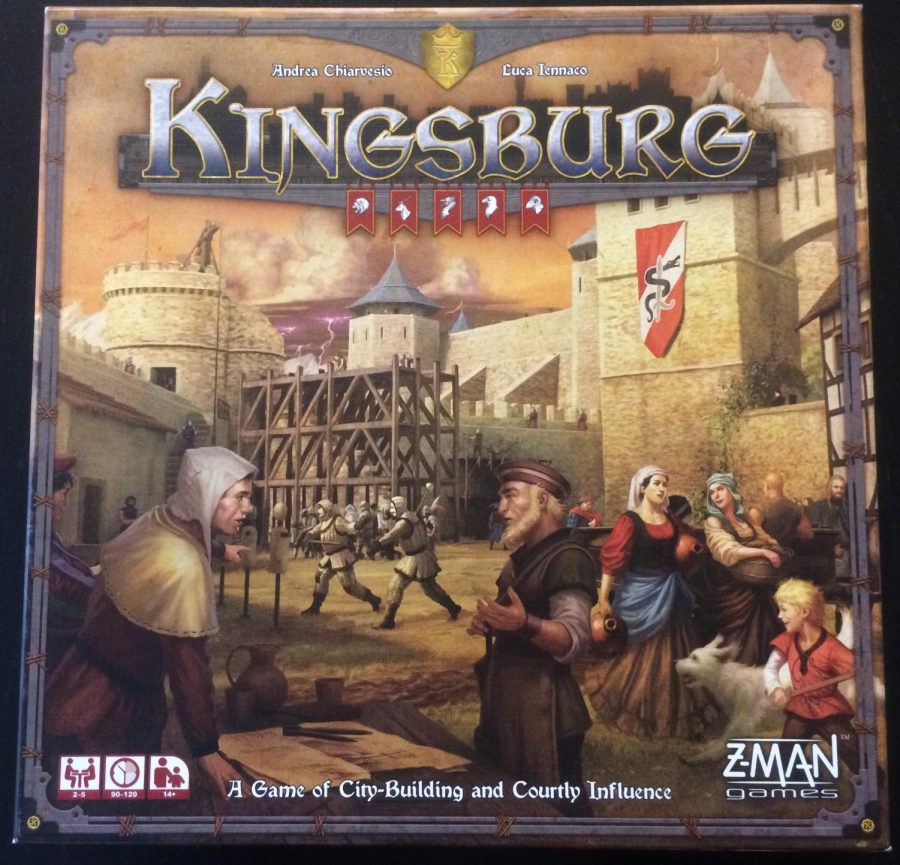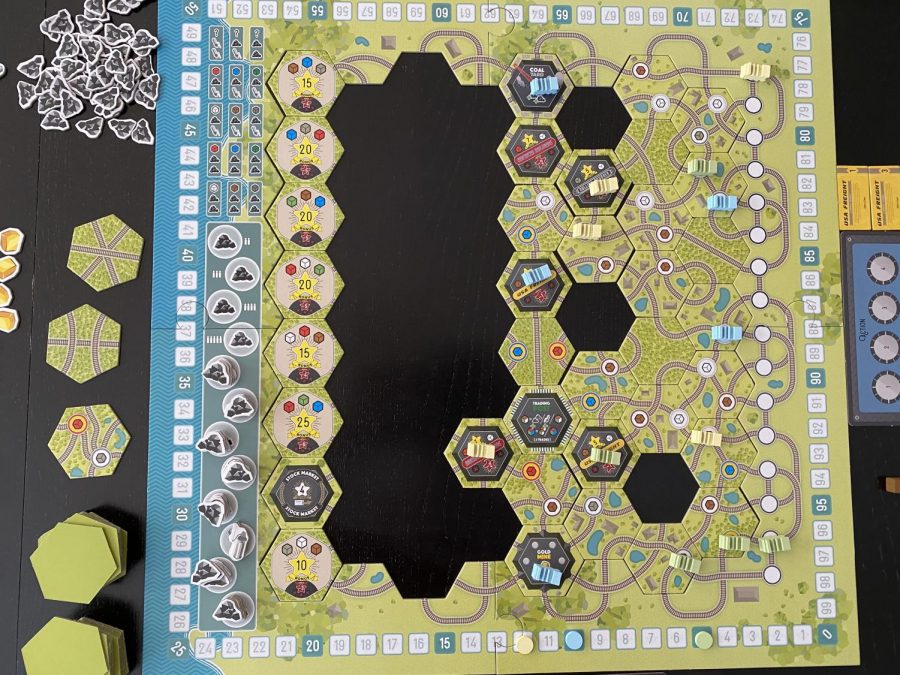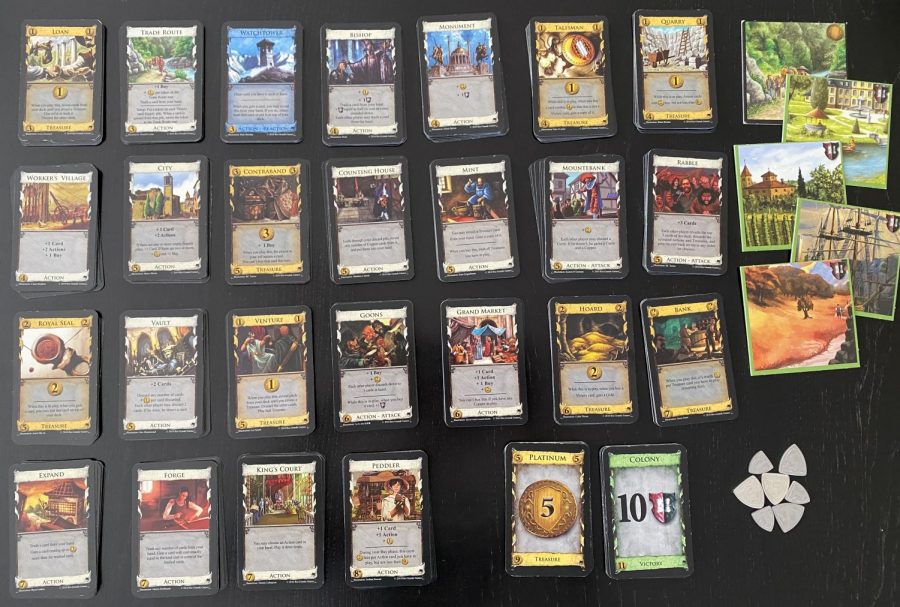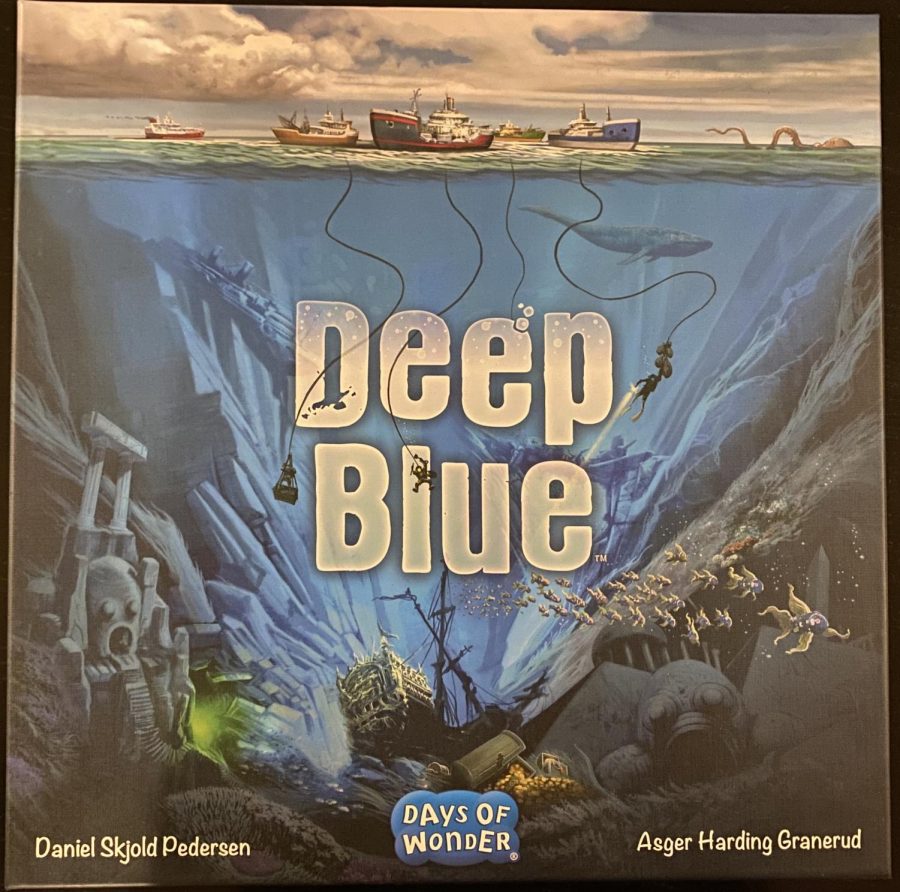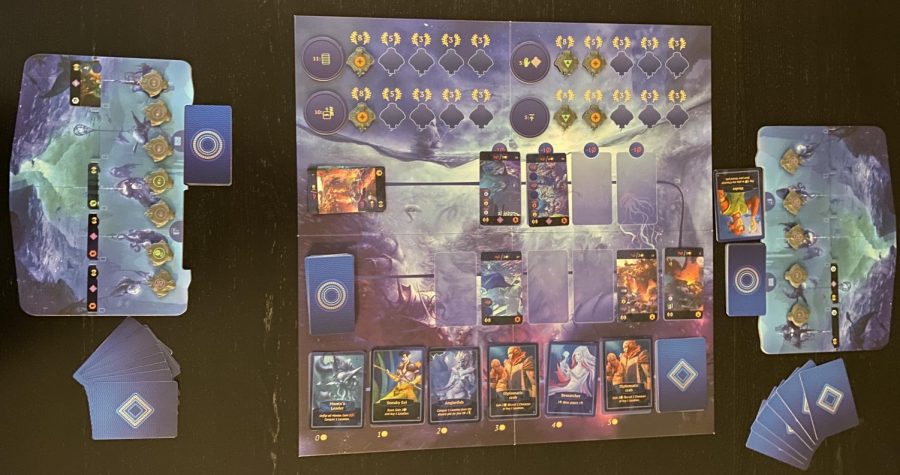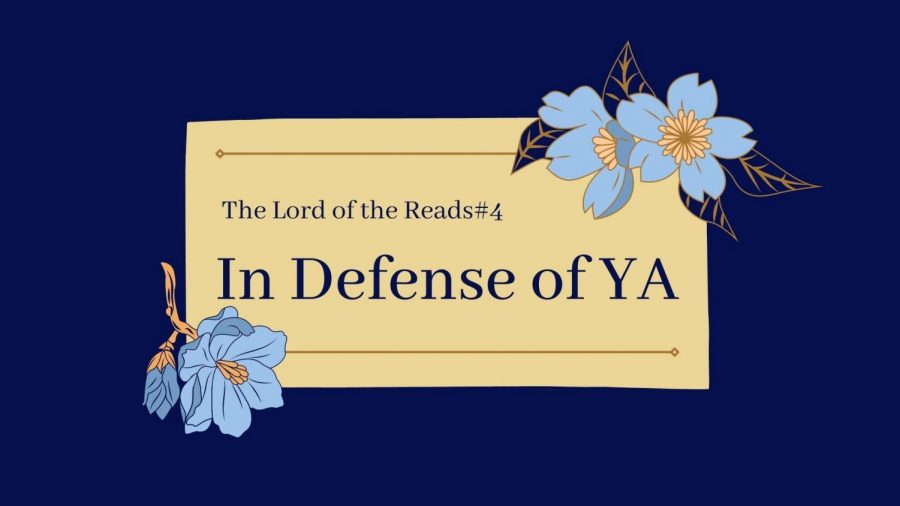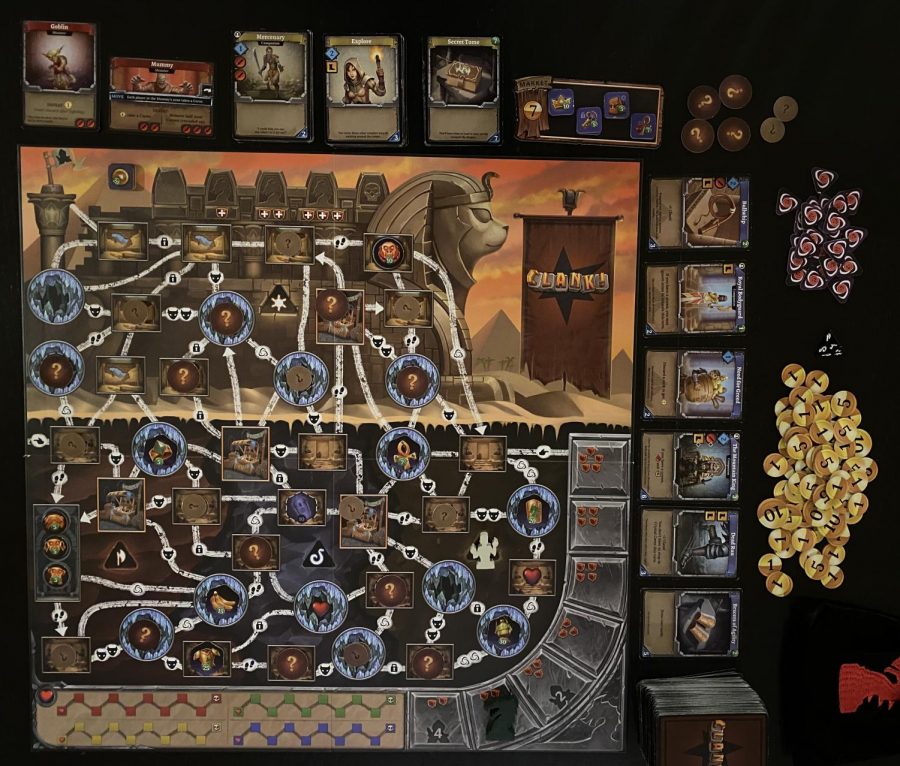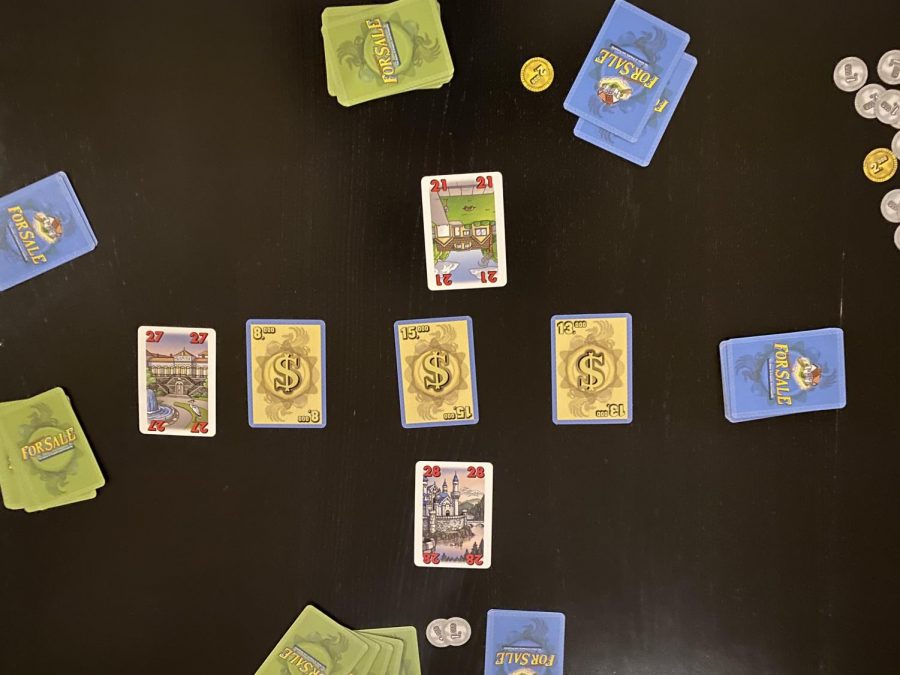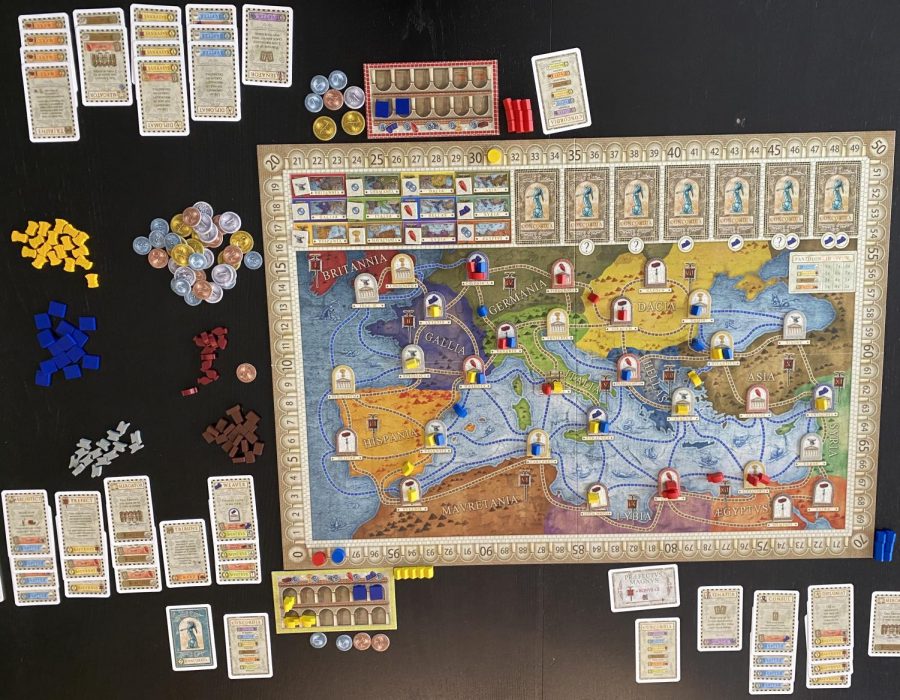Kingsburg is under attack, and you must prove your worth as you influence the king’s advisors and build up your strength to defeat monsters every winter. You’ll need to get the right resources and construct the right buildings to beat your competitors.
The first edition of the game was very successful, so they made a second edition of the game that includes an expansion to the first edition and more. It’s a very tempting package to get just from that, but the game is a worker placement game where you will roll dice and place those dice on different spaces. However, the dice are all six-sided, and rolling higher is better. So is this game extremely lucky, or is there a reason why this game is quite popular among board gamers? Before we can find out, let me show you how to play.
How to Play
Kingsburg is played over the course of five years. In each year, there will be three productive seasons and then a battle in winter. There are also small things that will happen between each season. Each player will be given a building board to keep track of which buildings they have.
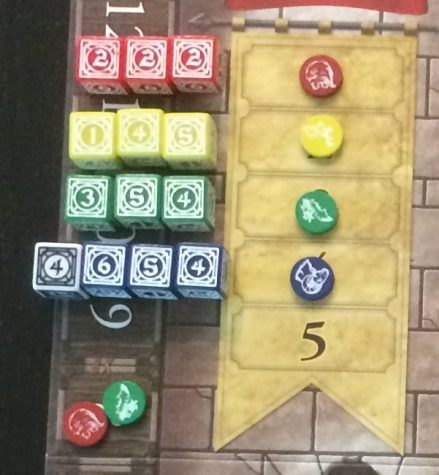
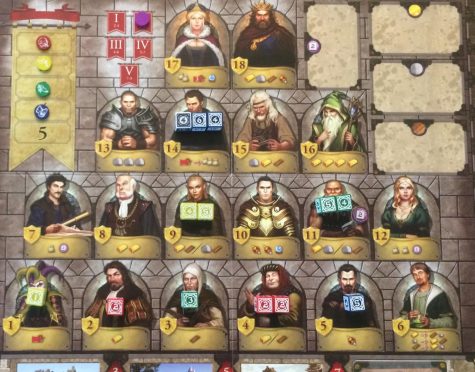
Spring, summer, and fall will consist of a productive season where players will roll their dice, influence advisors, and construct a building. Players will roll all three of their dice. Players will take turns influencing one advisor in ascending order, based on their dice totals. There are 18 advisors with values 1-18, and a player can influence an advisor by placing one, two, or three dice on an advisor that have a total equal the value of the advisor. Only one player can influence each advisor. Players will continue to place their dice until all players have placed all their dice or cannot place their dice on any empty spaces.
Many advisors will give players some combination of gold, wood, and stone, the three resources used for buildings. Some advisors will give players victory points, military strength, tokens they can use to increase their dice totals, or the ability to look at the monster everyone will fight at the year’s end.
Next, players will receive rewards for each advisor they influenced, starting with the lowest-ranked advisor, and finishing with the highest rank. In the same order that players placed dice, everyone will decide if they want to build.
Your building board is divided into lettered rows and numbered columns. Each building tells you which resources it requires, how many points it is worth, and its ability once it is built. You can get any building in column 1. To make a building in column 2, for example, D2, you will need to have already built D1. To build B4, you have to build B1, then B2, then B3, and then B4.
After fall comes winter. During winter, each player will have to battle a monster. The strength of the monster has a range, but that range increases each year. Players may have accumulated some strength from influencing advisors or from their buildings. Before the battle, the king rolls a reinforcement dice and all players will get strength equal to the roll.
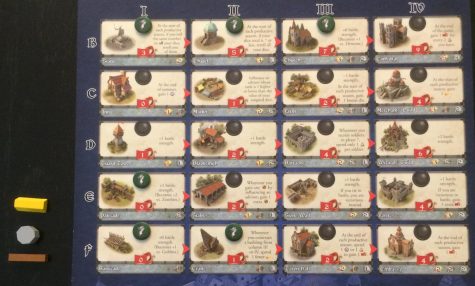
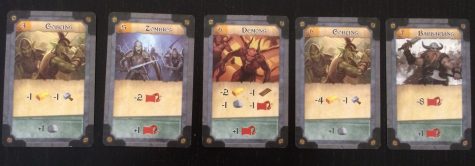
The monster is revealed and each player compares their total strength with the strength of the monster. If they have less, they will face a penalty shown on the card. If they have more strength, they are victorious and will get a reward shown on the card. The player who is victorious and has the most strength gets a bonus victory point. Players that tie do not gain or lose anything. After the battle, all players reset their military, and a new year starts.
There are also a few small things that happen in between seasons to make each one different. Before spring, the player who has constructed the least buildings will get a bonus dice. In between spring and summer, all players with the most buildings get a victory point. In between summer and fall, the player with the least buildings gets the king’s envoy, which allows them to influence an advisor who already was influenced or build two buildings after the season. Before winter, players can trade two resources for a military strength any number of times.
At the end of the fifth year, the player with the most victory points is the winner.
Final Thoughts
Overall, I found Kingsburg to be a very interesting game. There were multiple components that I liked, and plenty of others that I didn’t.
The artwork and components from the first edition, which I’ve seen in pictures, were quite good. The ones in the second edition, which is more readily available, are also good. The board symbols are more clear and the resources are shaped like the resource instead of as cubes, like in the first edition.
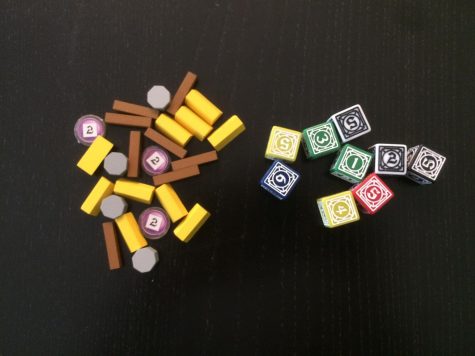
The main mechanism in this game is rolling your dice and figuring out where you place them, so you can get what you need to construct the building you want. When you roll low numbers, there are fewer options available. When you roll higher numbers, it is easier to get what you want. I was surprised when I realized that the game does four main things to mitigate the luck of the dice.
First of all, board games that involve dice usually don’t rely on them to make a difference in the game outcome. If they do rely on dice, the rules will make it so that the actual results get close enough to the theoretical probability. Kingsburg does the latter since you will roll at least 45 dice throughout the game. This does a pretty good job of evening out the high and low roll, since everyone will have a good, bad, and mediocre production season at least once throughout the game..
Secondly, there are a lot of catch up mechanisms even if rolling poorly. When you roll a low score and cannot afford a building, you will get the king’s envoy before fall and a bonus dice before spring. These help a lot and can get you back on par with everyone else. In addition, these catch-up mechanisms are also interesting because you may purposely not build, so you can save up for a more expensive building. You may get one of the bonuses as a result, which can be a huge boost.
Third, the players with lower totals go before the players with higher totals, so they get to place their dice before another player can block them. You can also look at the numbers your opponents have and block them from placing one or more of their dice, negating their higher totals.
Having a higher total does not mean you will get the resources you need. You must have to right combination of numbers to influence certain advisors, so having three sixes allows you to only influence advisors with ranks six, 12, and 18. The lower total of 12, with three, four, and five on the dice allows the player to influence advisors with ranks three, four, five, seven, eight, nine, and 12.
Lastly, you can also construct buildings that give you power over your dice. One building lets you reroll a dice if all your dice show the same number and another lets you reroll all your dice if you have a total of seven or less. One building even gives you a bonus dice for the rest of the game.
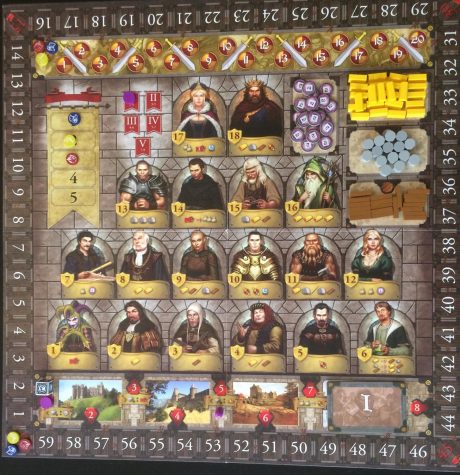
Buildings are my favorite part of the game. Each building row has its own flavor with abilities, costs, and victory points, and you can choose which rows you want to build. There are enough buildings to play the game multiple times and pursue a different strategy each time by building something different.
The main reason why you are getting buildings and influencing advisors is to fight the monster at the end of each year. Sometimes, gathering enough strength is easy, but other times it can be challenging. Close games will usually come down to the final battle. My only issue with the fight revolves around how you get victory points.
Points are gained mostly from your buildings, some from advisors, and some from the monsters. When it comes to the battle, I am not excited about winning as much as I am worried about the penalty for losing. The penalties can sometimes be so devastating losing a battle may be enough to eliminate you from the game. I haven’t seen anyone ever try to ignore the monster completely, but there may be a strategy there. So far, the player who lost the most battles has never won. I’m not sure the yearly monster was made to be a strategic option or as a restraint to make building harder in later years when you have more abilities.
Now let’s move on to game length, scalability, and teachability. The game length on the box says 90 minutes and that can be about right. I was surprised at how much thinking time some players take when there are only a few options with their dice. I was also pleased that the game length usually is shorter than 90 minutes after the first few games. My games have mostly been with two or three players, and games with four or more players will take longer because more players have to play the same number of turns.
The game works with 2-5 players. More players will definitely have more interaction with influencing advisors and therefore will make the game harder. With two and three players, the game seems a little bit too empty and easy despite the neutral player in 2-player games. Teaching the game is easy because there aren’t too many rules to explain. People in middle school or older are likely to pick up the game quickly.
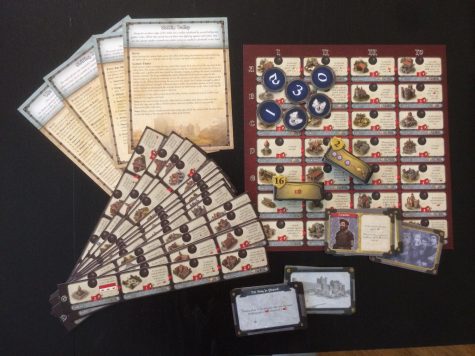
Kingsburg is listed at $60 by the official website. That is not a bad price because the game also includes five expansion modules from the first edition expansion and a new sixth module. I’ve only played with two of the modules so far that included additional building rows and a more strategic approach to the king’s reinforcements before the battle. The other modules add an event deck, new powers for the advisors, and ways to have an asymmetric start by having a special building row or a role for the game. You may be able to find the game cheaper sometimes.
Overall, Kingsburg is always an enjoyable experience and it has enough replayability to make me want to play it again and with different modules. Kingsburg does struggle because you have to rely on luck to be able to influence the advisors you want, and the end of year battles fell a little bit flat. However, its luck mitigation, tons of buildings, and high dollar value bring Kingsburg up to a solid 7.5 out of 10.
The design for Kingsburg is extremely innovative and a first to board gaming, so I highly recommend you check this game out because you are probably going to like it.

